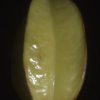Free Online Productivity Tools
i2Speak
i2Symbol
i2OCR
iTex2Img
iWeb2Print
iWeb2Shot
i2Type
iPdf2Split
iPdf2Merge
i2Bopomofo
i2Arabic
i2Style
i2Image
i2PDF
iLatex2Rtf
Sci2ools
CVPR
2007
IEEE
2007
IEEE
Polarization and Phase-Shifting for 3D Scanning of Translucent Objects
Translucent objects pose a difficult problem for traditional structured light 3D scanning techniques. Subsurface scattering corrupts the range estimation in two ways: by drastically reducing the signal-to-noise ratio and by shifting the intensity peak beneath the surface to a point which does not coincide with the point of incidence. In this paper we analyze and compare two descattering methods in order to obtain reliable 3D coordinates for translucent objects. By using polarization-difference imaging, subsurface scattering can be filtered out because multiple scattering randomizes the polarization direction of light while the surface reflectance partially keeps the polarization direction of the illumination. The descattered reflectance can be used for reliable 3D reconstruction using traditional optical 3D scanning techniques, such as structured light. Phase-shifting is another effective descattering technique if the frequency of the projected pattern is sufficiently high. We demonst...
Computer Vision | CVPR 2007 | Real-world Translucent Objects | Reliable 3d Coordinates | Reliable 3d Reconstruction | Subsurface Scattering | Traditional Structured Light |
| Added | 12 Oct 2009 |
| Updated | 28 Oct 2009 |
| Type | Conference |
| Year | 2007 |
| Where | CVPR |
| Authors | Tongbo Chen, Hendrik P. A. Lensch, Christian Fuchs, Hans-Peter Seidel |
Comments (0)

